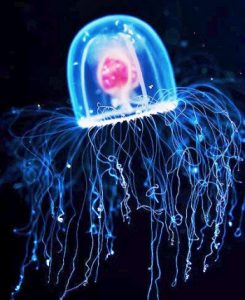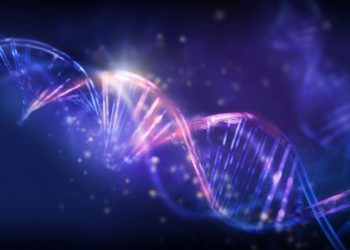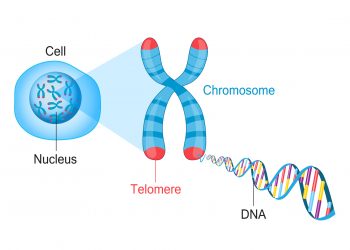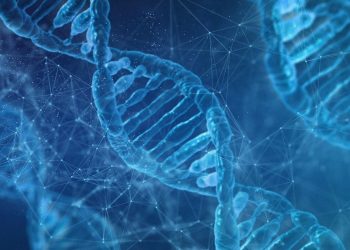It’s time to accelerate efforts to Biological Immortality now
It’s time to accelarate efforts. A thousand years ago, probably some of today’s capabilities may seeem quite fantastic and extraordinary, fictipmsl and so on. And a 1000 years later in future there may be lots of things even seeems quite dreamy and capabilities to protect, help to enable dreams of individuals.
Imagine, how this would be amazing for loved ones. For all of us. For everyone.
What is Biological Immortality ?
Biological immortality refers, aging related immortality. This is what biological immortality refers to. To understand this, maybe we can focus on cellular mechanisms, embrionic development processes, genetics, biology and so on. We may need to understand these factors and mechanism.
We call everyone into action and some efforts to raise awareness and to contribute awarenesses and all efforts all around world.
Biological immortality refers to a theoretical condition in which an organism does not undergo the aging process and is capable of sustaining its cellular functions indefinitely. In this state, the organism would not experience the typical degenerative changes associated with aging, potentially avoiding natural death. While some examples in nature, such as certain jellyfish and lobsters, exhibit characteristics suggestive of extended lifespans, achieving biological immortality in more complex organisms like us remains a speculative concept. Scientific research in the field of aging aims to understand the underlying processes that contribute to lifespan and explore ways to enhance it. We hope this can be achieved soon. I true biological immortality remains a challenging and unproven idea.
Understanding Processes of Developmental Stages, Cellular Dynamics, and the Quest for Everlasting Life
One cell, zigot. When spermas and eggs are fertilized, these gamets(reproductory cells) makes one cell together; that is called zigot.
The zygote marks the beginning of the embryonic development process, giving rise to a multicellular organism through cell division and differentiation.
As an individual, this is the early era of an individual, of an embrio. Where the journey of an individual biologically begins. This one cell during the development stages until born, during life turns into an individual. So it can be said that all cells in the body are copies of this one cell, zigot. This cell start to multiply and experience some of developmental stages, blastula, gastrula, eighty blastomer, embrio and a baby, a puppy individual.
This one cell differantiate into tissues, organs, systems. This specifications are related with active gene groups. So all cells in the body of an individual are the identical twins of one cell; that is called zigot. All cells are the same with various active gene groups (the same cell and activation of different parts of these gene groups) and these active gene groups define, the specific features and functions, identities of each cells. So various parts, organs and sytems of body may be able to specialize.
And DNA, RNA, all genetic informations in cells may adress the way of these processes. So genetics may seen as also “genetic codes” and each cell division during developmental stages of individuals; and in embrionic state, may be organized with these structures and informations in cells.
This is the basically process of development stages .
So we can say that cell divisions are highly related with life functions. And regeneration of cells are essential and important too and actually it is quite important to sustain healthy cell mechanisms and functions of body.
Importance of cell divisions……….
When we consider the cell division mechanism. Telomeres are one of these factors.
What are telomeres ? : Telomeres, Telomerase and Biological Immortality
Telomeres play a crucial role in maintaining the stability of the genome and preventing the loss of essential genetic information during cell division. The enzyme telomerase can add DNA sequences to the ends of telomeres, counteracting the shortening process. Telomerase is active in certain cells, such as embryonic cells, stem cells, and some immune cells. However, in most somatic cells (non-reproductive cells), telomerase activity is limited, contributing to the gradual shortening of telomeres over time.
Research on telomeres has implications for understanding aging, cancer, and various diseases associated with cellular dysfunction. Shortened telomeres have been linked to aging and age-related diseases.
The enzyme telomerase can counteract this shortening by adding DNA sequences to telomeres, and its activity is crucial in certain cells, such as stem cells. Telomeres play essential roles in maintaining genome stability, regulating cell divisions, and influencing various aspects of development, aging, and disease.
Also excessive telomerase activity is a characteristic of many cancer cells, allowing them to maintain their ability to divide indefinitely.
Yes, you hear right. The cancer cells have ability to divide theorotically infinitely and the telomeres of these type of cells getting longer and longer while they divide.
If we can find a way to potect the length of telomeres, this may be a gate to biological immortality and/or enlonged lifes of alives. Imagine how this may be amazing for all loved ones.
For example genetic stimulations, enzyme and molecule therapies may help us.
If we can achieve use telomerase activities on telomeres on cells with controlling the cancer (with gene therapies, cancer vaccines etc.) we can increasingly stimulate these kind of cell activities. These are complex issues of course but understanding these mechanisms may show and offer us some enabilities.
ONE STEP TOWARD BIOLOGICAL IMMORTALITY: EMBRIONIC DEVELOPMENT STAGES AND STEM CELLS
Stimulating embryonic development processes in adults could potentially contribute to achieving biological immortality. During embryonic development, cells divide rapidly, differentiate into various types, and form tissues. By activating these processes in mature organisms, there is a possibility to enhance the body’s natural regenerative abilities and potentially reverse or slow down the aging process. However, such approaches need careful consideration due to ethical and practical challenges, and a deep understanding of how to balance growth and regulation in the context of the whole organism is crucial.
The idea is that by reintroducing these processes in mature organisms, it might be possible to enhance the body’s regenerative capabilities and counteract the effects of aging. This approach could involve activating dormant or quiescent stem cells, encouraging tissue repair, and promoting cellular rejuvenation. Also, implementing such strategies requires a nuanced understanding of the intricate balance between promoting growth and ensuring proper regulation to avoid unintended consequences, such as uncontrolled cell proliferation. Ethical considerations, as well as the need for precise control over the process, pose significant challenges in exploring this potential pathway to biological immortality.
Stem cells and the ongoing research in this field offer promising avenues toward understanding and potentially achieving biological immortality. Stem cells possess a unique regenerative capability, capable of differentiating into various cell types, suggesting their potential for replacing aging or damaged cells in tissues and organs. This regenerative potential is key to addressing age-related degeneration and promoting overall health. Stem cell therapies could be instrumental in treating age-related diseases and preventing their onset, contributing to an extended and healthier lifespan. Furthermore, the exploration of stem cells aids in deciphering the molecular mechanisms underlying aging, paving the way for strategies to modulate these processes for cellular rejuvenation.
Tissue engineering plays a pivotal role, utilizing stem cells to construct artificial organs or tissues that could replace aging or compromised counterparts. Combining these approaches synergistically emerges as a promising avenue, where the collective impact of activating endogenous stem cells, exogenous stem cell therapies, and tissue engineering contributes to the overarching goal of biological immortality. However, these strategies demand meticulous scientific scrutiny, ethical considerations, and a comprehensive understanding of the complex interactions within the cellular microenvironment.
What is Gene Regulation ?: Achieving Biological Immortality through “Gene Regulation” Methods
To achieve biological immortality, scientists explore gene regulation strategies. This includes maintaining chromosome caps (telomeres), reversing aging-related cell changes, enhancing DNA repair, activating tissue-regenerating stem cells, and adjusting metabolic pathways for longevity. Epigenetic modifications and anti-aging therapies targeting gene networks are also considered. However, ethical concerns and the complexity of aging require careful research. While biological immortality remains a challenging goal, understanding and manipulating gene regulation offer promising ways to extend healthy lifespans.
As it is mentioned at previous paragrahs, “biological immortality” refers to the ability of an organism to avoid death due to aging or age-related diseases. While achieving true biological immortality is a complex and challenging goal, understanding gene regulation plays a crucial role in exploring potential avenues for extending lifespan and promoting healthier aging. Here’s how gene regulation may contribute to the pursuit of biological immortality:
Cellular Senescence and Telomere Maintenance:
- Gene regulation is involved in controlling cellular senescence, a process where cells lose their ability to divide and function properly. By understanding the genes that regulate senescence, researchers can explore ways to delay or reverse this process.
- Telomeres, the protective caps at the end of chromosomes, play a role in cellular aging. Gene regulation mechanisms are implicated in maintaining telomere length. Activating genes that promote telomere maintenance could potentially extend the lifespan of cells.
DNA Repair and Maintenance:
- Genes involved in DNA repair and maintenance are critical for preserving the integrity of the genome. Enhancing the expression of genes responsible for DNA repair may help mitigate the accumulation of DNA damage over time, contributing to healthier aging and increased lifespan.
Stem Cell Regulation:
- Stem cells have the potential to differentiate into various cell types and contribute to tissue repair and regeneration. Gene regulation controls the fate and activity of stem cells. Understanding and manipulating these regulatory mechanisms could promote tissue renewal and repair, potentially extending the functional lifespan of organs and tissues.
Metabolic Regulation:
- Genes involved in metabolic processes, such as those related to nutrient sensing and energy metabolism, play a role in aging. Caloric restriction and related interventions have been linked to extended lifespan in various organisms. Manipulating gene expression in metabolic pathways may offer avenues for extending healthspan and lifespan.
Epigenetic Modifications:
- Epigenetic changes, such as DNA methylation and histone modification, influence gene expression patterns. Understanding and potentially reversing age-related epigenetic modifications may help rejuvenate cells and tissues.
Anti-Aging Therapies:
- Gene regulation studies contribute to the development of potential anti-aging therapies. Identifying and targeting specific genes or pathways involved in aging may lead to interventions that slow down the aging process and enhance overall health.
It’s important to note that while progress is being made in understanding the genetic basis of aging, achieving true biological immortality is a complex task that involves ethical, social, and scientific challenges. Additionally, aging is a multifaceted process influenced by various genetic and environmental factors. Ongoing research in gene regulation and related fields contributes to our understanding of aging and may pave the way for interventions that promote healthier and longer lives.
There are some natural, biologically immortal species
Turritopsis dohrnii, commonly known as the “immortal jellyfish,” is a species of jellyfish with a unique ability to revert its cells back to their earliest form and start its life cycle anew. This process is known as transdifferentiation, and it allows the jellyfish to potentially bypass the normal life cycle and avoid death. While the term “immortal” is used colloquially, it’s essential to clarify that Turritopsis dohrnii is not truly immortal in the sense of being invincible or never facing death.
Here’s a simplified overview of the life cycle of Turritopsis dohrnii:
Polyp Stage: The jellyfish begins its life as a polyp, a stationary and tubelike structure attached to a substrate.
Strobilation: The polyp undergoes a process called strobilation, where it transforms into a series of disc-like segments known as ephyrae.
Medusa Stage: The ephyrae develop into free-swimming, bell-shaped organisms resembling typical jellyfish. This stage is called the medusa stage.
Rejuvenation: In response to certain environmental conditions or stress, Turritopsis dohrnii can undergo transdifferentiation. The cells of the adult medusa can transform back into the polyp stage, essentially restarting the life cycle.
This unique ability to revert to an earlier developmental stage allows Turritopsis dohrnii to potentially repeat its life cycle indefinitely under suitable conditions. However, various factors such as predation, disease, or adverse environmental conditions can still pose threats to the survival of these jellyfish.
While the term “immortal jellyfish” has captured public fascination, it’s important to note that the concept of biological immortality in the strictest sense remains a topic of scientific exploration and debate. The adaptive mechanisms of Turritopsis dohrnii provide insights into the remarkable resilience and flexibility of certain organisms in the face of environmental challenges.
What Can You Do To Contribute Biological Immortality Efforts and Researches ?
Here’s some ways to contribute biological immortality efforts and researches
- Spread Awareness:
- You can share the vision of biological immortality with your friends, family, and community.
- Engage in conversations, both online and offline, to raise awareness about the possibilities that lie ahead.
- Support Research Initiatives:
- You can contribute to research foundations and organizations dedicated to exploring the frontiers of life extension technologies.
- You can advocate for increased funding and resources for scientists and researchers working on groundbreaking studies in the field.
- Educate Yourself and Others:
- It may be good and helpful to stay informed about the latest advancements in biotechnology, genetics, and regenerative medicine.
- Encourage education and open dialogue about the ethical considerations surrounding life extension.
- Collaborate and Connect:
You can;
- Join or create communities passionate about the pursuit of biological immortality.
- Foster collaboration between scientists, entrepreneurs, and enthusiasts to accelerate progress.
- Lobby for Policy Change:
- You can advocate for policies that support responsible and ethical research in life extension technologies.
- Engage with policymakers to ensure that regulatory frameworks encourage, rather than hinder, scientific exploration.
- Invest in the Future:
- Support companies and startups at the forefront of life extension research through strategic investments.
- Encourage the integration of life extension technologies into mainstream healthcare practices.
We can do lots of various things about these efforts. Together, we can do somethings with the help of the god.
You can join these efforts, maybe we can contribute to the ralization of these possibilities that is being dreamed and maybe a reality waiting to unfold.
With love, with an unwavering optimism and with our best wishes,
Related articles:
Will Immortality Be Possible One Day ?
MOLECULES RELATED WITH IMMORTALITY AND MAY HELP WITH FINDING BIOLOGICAL IMMORTALITY AND RESEARCHES
A List Of Heredity Related Molecules: What are the heredity related molecules ?
BIO ARTIFICIAL OVARIES: FUTURE OF BIOARTIFICIAL OVARIES
Telomeres and Quest for Biological Immortality
IMMORTAL JELLYFISH: Turritopsi Dohrnii
STEM CELL THERAPIES FOR DOGS: AND FOR ALL LOVED ONES
What are Nucleotides ? : Structure of DNA and Nucleotides
See also:
https://www.genome.gov/genetics-glossary/Telomere

















